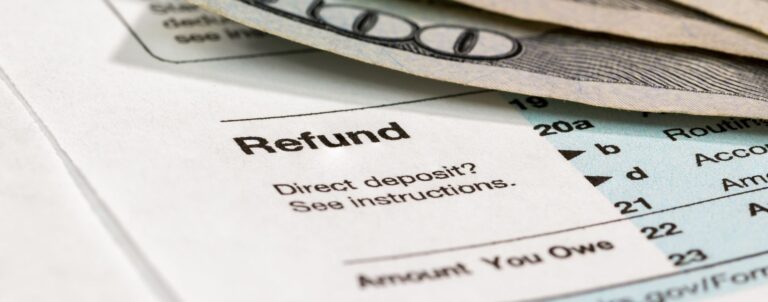Should More Small Carriers Use Fleet Cards? Pros, Cons, and Fleet Card Stats
The benefits of fleet cards for trucking businesses seem obvious: fuel discounts, spending controls, better security… So why are so many small fleets choosing not to use them? Let’s take a look at the pros, cons, and fleet card statistics that might surprise you.
What is a fleet card?
A fleet card is a type of payment card used by transportation companies and private fleets to monitor spending on diesel, gasoline, and other fuels, and, depending on the program, may be used for other business expenses.
Fleet card and fuel card are largely interchangeable terms, so we’ll use both to describe these types of programs.
Related article: Fuel Cards for Trucking Companies: A Buyer’s Guide for Carriers
The pros and cons of fuel cards
Fuel cards can offer lots of benefits:
- Fuel savings: Fuel costs can take up 25% or more of your revenue as a trucking business owner, so discounts and rebates can get you a long way toward becoming more profitable.
- Better security and control: Tracking fuel spending across multiple trucks, routes, and drivers is essential to running an efficient, profitable trucking business.
- IFTA reporting: Depending on the card you choose, you may have access to reports that simplify quarterly IFTA taxes
- Cash flow support: Many fuel cards offer a line of credit, meaning you don’t have to dip into savings to pay for fuel if your clients haven’t paid you yet. The boost to cash flow makes making large fuel purchases much easier.
Unfortunately, there are also plenty of problems with most fuel card choices in today’s market.
For one, they often use a closed network, meaning you can only purchase fuel at certain retailers. For another, many fuel card programs use outdated technology that makes it difficult to manage for a small carrier.
One of the biggest complaints small carriers and owner-operators have about fuel programs is the fees. Many cards have long, confusing terms and conditions, including transaction fees, account fees, and other extra charges. This can make it difficult to know how much you’re actually saving by using the card.
Many of the problems with fuel cards stem from the fact that most programs are run by three major players in the industry: Fleetcor, Wex, and Voyager.
Roughly 75% of the fleet card market is held by these companies, which run largely closed network programs that limit card acceptance to a select number of retailers.
What percent of small carriers use fleet cards?
According to data compiled by the Mercator Advisory Group, just 60-70% of small carriers (15-99 trucks) use a fleet card, and fewer than 10% of micro-carriers (fewer than 15 trucks) use a fleet card. Compare that to 90-100% of carriers will 100+ trucks who use fleet cards to control spending and save money.
The fuel programs offered by the biggest fleet card providers typically target large and mega-sized carriers. Naturally, the technology and products are designed to fit those companies’ needs.
It’s no wonder then that small carriers are much less likely to use fuel cards than their larger counterparts.
Bobtail Zero Mastercard®: designed with small fleets in mind
When we were considering creating our fleet card, we had a couple of options:
- Partner with an established fuel card company and create a branded Bobtail card.
This would’ve been the easiest option – in fact, it’s what most companies do when they want to sell a fuel card. You’ll notice that many “independent” fuel card options are simply branded versions of one of the top three companies.
But this option wouldn’t have fixed the problems with fuel cards we were hearing about from our customers. That made it a non-starter for Bobtail.
- Build fleet card technology from the ground up.
This was the more difficult option – an exercise in innovation that put Bobtail’s team to the test. And it was worth it.
By building our own fleet card technology, we could design exactly the program our customers wanted. We’re also able to continue improving the card every day with new features and fuel savings partners.
Here’s how we designed the Bobtail Zero Mastercard® to work for small carriers:
First, we chose Mastercard so that customers could have the flexibility to fuel anywhere Mastercard is accepted.
Next, we took out the fees. No fees for origination, accounts, transactions, late payments, or anything else. Bobtail Zero customers only need to pay for the fuel they purchase through the card.
Then, we created an easy-to-use platform, available on a web browser and our mobile app, to track spending, manage cards, and get the best price on fuel using our Fuel Finder.
Finally, we have 900+ retail partner locations that offer fuel savings to our customers, including TA Petro, TA Express, Roady’s, Maverik, Sheetz, and Speedway. And we’re not stopping there – we’re adding new fuel savings partners all the time!
Interested? You can learn more about Bobtail Zero here.
Opinions, advice, services, or other information or content expressed or contributed here by customers, users, or others, are those of the respective author(s) or contributor(s) and do not necessarily state or reflect those of The Bancorp Bank, N.A., (“Bank”). Bank is not responsible for the accuracy of any content provided by author(s) or contributor(s).
Article By
Keep Learning












